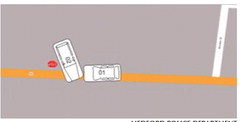Farm Bureau warns motorists to share road with farm equipment
Fall harvest time can be one of the busiest and most dangerous seasons of the year for those involved in agriculture. For this reason, the third week of September is recognized as National Farm Safety and Health Week (NFSHW). The 2021 theme of NFSHW is ‘Farm Safety Yields Real Results’ and takes place Sept. 19-25.
Throughout the state harvest is underway and farmers are back to the fields. Tractors and other implements of husbandry (IOH) are allowed to operate on Wisconsin roadways but are often large and slow-moving which can cause confusion for drivers sharing the roads.
“At the end of the day farmers and motorists alike want to return home to their families,” said Wisconsin Farm Bureau President Kevin Krentz. “Safety has to be a top priority for everyone sharing the road.”
Since 2009, the Wisconsin Department of Transportation has recorded more than 2,100 crashes involving agricultural equipment that resulted in 1,043 injuries and 43 deaths.
Three scenarios drivers and farmers should know how to handle are passing farm equipment, left-hand turns and braking distance needed at controlled intersections.
Passing: In 2014, it became illegal to pass an IOH which include farm tractors and farm machinery, or an Ag-Commercial Motor Vehicle, trucks that are specially designed for agricultural work, in a no-passing zone. Motorists should wait until they enter a passing zone when considering going around a slow-moving vehicle. Farmers should not pull over in a no-passing zone to let vehicles pass unless the road shoulder condition and width can allow for the farm machinery to completely move onto the shoulder. Farmers should also not wave a driver forward to pass them. Although these actions may seem courteous, they send mixed signals and are not encouraged. In a passing zone, or if shoulder width permits, farmers are obligated to yield the roadway to the overtaking vehicle so they do not impede the normal movement of traffic.
Left-hand turn: It can turn into a dangerous situation when a farmer is attempting to make a left-hand turn. Farm equipment, especially tractors, will likely have two flashing amber or yellow lights on the cab or tire fenders of the tractor when in operation on the roadway. When a farmer signals to turn, the light will continue to flash in the direction the farmer is turning. The other light will go solid. For motorists, this is an important distinction to recognize. For farm tractors or farm machinery without turn signals, hand signals should be used to indicate the operator’s intention to turn.
A controlled intersection: When a motorist legally passes large farm equipment within a very short distance of a controlled intersection (stop sign or stop lights), this action can dramatically impact the reaction time and braking distance for the farm equipment operator. Farm equipment is much heavier than a normal passenger vehicle which requires a larger braking distance than the average vehicle. Having adequate braking distance is critical for the farm equipment operator.
The Wisconsin Department of Transportation recommends drivers slow down immediately when they see a slow-moving vehicle emblem (orange and red triangle) on the rear of a tractor or other piece of equipment. This emblem indicates that the farm machine usually travels slower than 25 mph. Stay alert, focused and patient when passing a slow-moving agricultural vehicle in an area where passing is legal.
Farmers are asked to comply with the proper lighting and marking requirements to draw attention to the size, shape and speed of agricultural vehicles and to alert drivers that caution is required. There are specific requirements for different types of equipment.
“Sharing the road and respecting all who use it will help ensure every Wisconsin motorist has a safe experience on rural roads this harvest season,” Krentz added.
Wisconsin Farm Bureau Federation is the state’s largest general farm organization. Made up of 61 county Farm Bureaus, it represents agriculturists and farms of every size, commodity and management style. Learn more at wfbf.com.

